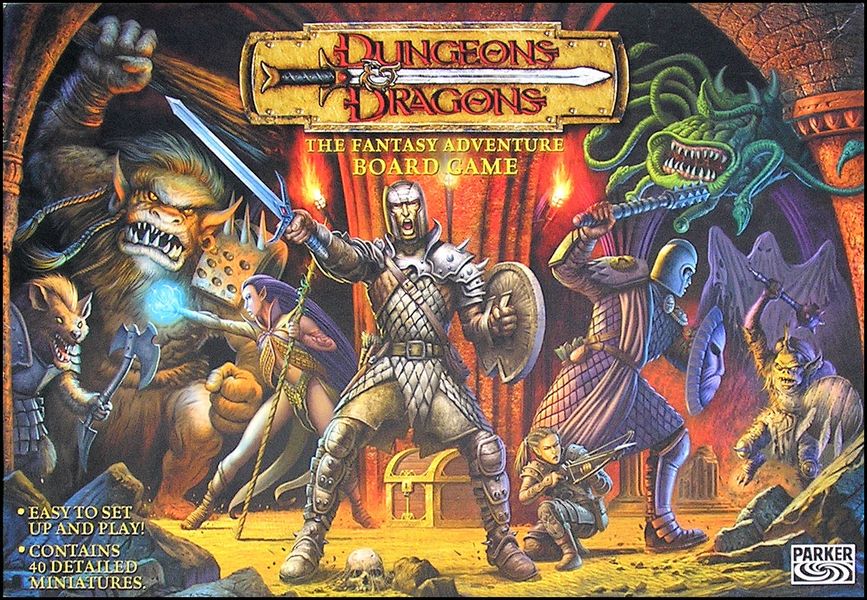Dungeons & Dragons: The Fantasy Adventure Board Game (2003) Board Game
Dungeons & Dragons: The Fantasy Adventure Board Game was released in 2003 and is designed for 2 to 5 players. The game is based on the popular Dungeons & Dragons role-playing game and includes elements of adventure, exploration, fantasy, fighting, and miniatures. The game features dice rolling, grid movement, a modular board, role-playing elements, team-based gameplay, and variable player powers.
Game Components of Dungeons & Dragons: The Fantasy Adventure Board Game
How To Setup Dungeons & Dragons: The Fantasy Adventure Board Game
The setup involves the Dungeon Master (DM) laying out the map sections using the double-sided gameboards. The DM arranges the tiles to create the dungeon, places monsters and doors according to the adventure scenario, and ensures the first room is empty. Players position their hero figures in the first room. When a door is opened, it triggers a room setup phase, randomizing the turn order via initiative cards and setting up new monsters and room contents.
Gameplay Mechanics and Game Objective
Player Experience
Players take on the roles of pre-generated heroes, navigating through dungeons, fighting monsters, and collecting treasures. The game lacks role-playing elements, focusing instead on tactical movement and combat. The experience can be challenging, especially for the DM, who often finds themselves at a disadvantage. Players have reported frequent losses, particularly in the early scenarios, due to the random nature of the initiative system and the strength of the enemies.
Pros
Cons
Personal Thoughts on Dungeons & Dragons: The Fantasy Adventure Board Game
This game is best suited for teenagers or older children who are new to the world of D&D and are looking for a simpler, more straightforward dungeon crawl experience. It serves as a good primer for introducing basic D&D concepts but lacks the depth and complexity of the full role-playing game. For those seeking a more cooperative or tactical challenge, other games like Descent or Mansions of Madness might be more appealing.
We are supported by our audience. When you purchase through links on our site, we may earn an affiliate commission, at no extra cost for you. Learn more.

